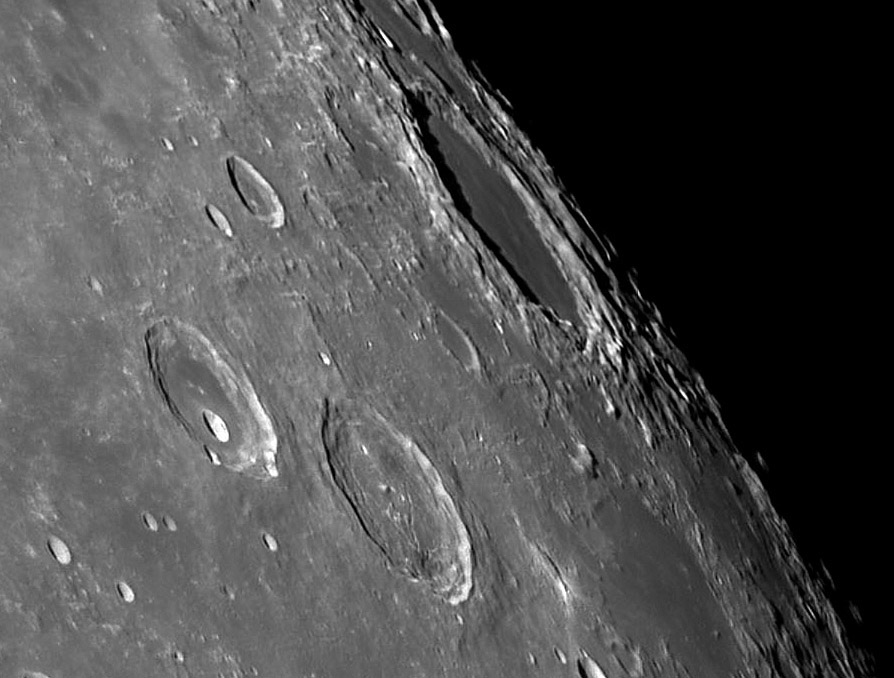Difference between revisions of "September 10, 2009"
| (5 intermediate revisions by one other user not shown) | |||
| Line 1: | Line 1: | ||
__NOTOC__ | __NOTOC__ | ||
=Oddities= | =Oddities= | ||
| + | <!-- Start of content --> | ||
<!-- ws:start:WikiTextHeadingRule:0:<h1> --> | <!-- ws:start:WikiTextHeadingRule:0:<h1> --> | ||
<!-- ws:start:WikiTextLocalImageRule:6:<img src="/file/view/LPOD-Sept10-09.jpg/87991943/LPOD-Sept10-09.jpg" alt="" title="" /> -->[[File:LPOD-Sept10-09.jpg|LPOD-Sept10-09.jpg]]<!-- ws:end:WikiTextLocalImageRule:6 --><br /> | <!-- ws:start:WikiTextLocalImageRule:6:<img src="/file/view/LPOD-Sept10-09.jpg/87991943/LPOD-Sept10-09.jpg" alt="" title="" /> -->[[File:LPOD-Sept10-09.jpg|LPOD-Sept10-09.jpg]]<!-- ws:end:WikiTextLocalImageRule:6 --><br /> | ||
| Line 6: | Line 7: | ||
<br /> | <br /> | ||
How many oddities do you see in this image?<br /> | How many oddities do you see in this image?<br /> | ||
| − | The craters, Atlas and Hercules in front and Endymion, the smooth-floored one near the terminator, don't count. | + | The craters, Atlas and Hercules in front and Endymion, the smooth-floored one near the terminator, don't count. Let's start with the obvious - the concentric rilles and dark halo craters that yank Atlas from the classification of normal complex crater into the more exclusive floor-fractured category. What else? Hmm. How about the mare ridge like feature down the middle of Endymion. Does this mean the floor material is lava? Probably - it is dark at [http://www.lpi.usra.edu/resources/cla/info/ai/ full Moon]. Ok, something else. Notice the small bright spot to the bottom right of Atlas. [http://www.mapaplanet.org/explorer-bin/explorer.cgi?map=Moon&layers=moon_clementine_base_v2&west=48.34&south=45.86&east=51.15&north=47.28&center_lat=&center=49.745&defaultcenter=on&grid=none&stretch=none&projection=SIMP&r=1&g=1&b=1&advoption=NO&info=NO&resolution=256&scale=0.23690&imageTopX=-85402.8750136495&imageTopY=1455402.3929163814 Clementine] shows it to be a fresh oblique impact crater with a zone of avoidance (to the bottom right) just like Proclus. Sean's low Sun image reveals that the bright pit is at the south end of a little hill that casts a shadow. There is no sign of the "hill" on Clementine, but there is a dark, unrayed zone, in the same spot. Hmm. One final odd feature - notice the line of bright hills north of Hercules that extends toward Endymion? Is it real, or a chance alignment that our eyes and brains, at least mine, make more out of then is there? Clementine does [http://www.mapaplanet.org/explorer-bin/explorer.cgi?map=Moon&layers=moon_clementine_base_v2&west=36.50&south=46.70&east=47.73&north=52.39&center_lat=&center=42.115&defaultcenter=on&grid=none&stretch=none&projection=SIMP&r=1&g=1&b=1&advoption=NO&info=NO&resolution=64&scale=0.94760&imageTopX=-340663.8953387737&imageTopY=1674891.3352191448 show] that there are little ridges and bright spots, but does not answer the question. What is your opinion (backed up by images)?<br /> |
<br /> | <br /> | ||
<em>[mailto:tychocrater@yahoo.com Chuck Wood]</em><br /> | <em>[mailto:tychocrater@yahoo.com Chuck Wood]</em><br /> | ||
<br /> | <br /> | ||
<strong>Technical Details</strong><br /> | <strong>Technical Details</strong><br /> | ||
| − | Sept 6, 2009. C-14 f/11, DMK21AU04.AS, Baader IR-pass filter; excerpt from a | + | Sept 6, 2009. C-14 f/11, DMK21AU04.AS, Baader IR-pass filter; excerpt from a mosaic of 12 frames (3:56 and 4:10 UT).<br /> |
<br /> | <br /> | ||
<strong>Related Links</strong><br /> | <strong>Related Links</strong><br /> | ||
| − | Rükl plates [ | + | Rükl plates [https://the-moon.us/wiki/R%C3%BCkl_7 7], [https://the-moon.us/wiki/R%C3%BCkl_14 14] & [https://the-moon.us/wiki/R%C3%BCkl_15 15]<br /> |
| − | An overhead [ | + | An overhead [[September_2,_2006|view]] of Endymion.<br /> |
<br /> | <br /> | ||
| + | <p><b>Yesterday's LPOD:</b> [[September 9, 2009|9/9/9]] </p> | ||
| + | <p><b>Tomorrow's LPOD:</b> [[September 11, 2009|Selenology 101]] </p> | ||
<hr /> | <hr /> | ||
| + | {{wiki/ArticleFooter}} | ||
Latest revision as of 20:53, 27 October 2018
Oddities

image by Sean Walker Manchester, NH.
How many oddities do you see in this image?
The craters, Atlas and Hercules in front and Endymion, the smooth-floored one near the terminator, don't count. Let's start with the obvious - the concentric rilles and dark halo craters that yank Atlas from the classification of normal complex crater into the more exclusive floor-fractured category. What else? Hmm. How about the mare ridge like feature down the middle of Endymion. Does this mean the floor material is lava? Probably - it is dark at full Moon. Ok, something else. Notice the small bright spot to the bottom right of Atlas. Clementine shows it to be a fresh oblique impact crater with a zone of avoidance (to the bottom right) just like Proclus. Sean's low Sun image reveals that the bright pit is at the south end of a little hill that casts a shadow. There is no sign of the "hill" on Clementine, but there is a dark, unrayed zone, in the same spot. Hmm. One final odd feature - notice the line of bright hills north of Hercules that extends toward Endymion? Is it real, or a chance alignment that our eyes and brains, at least mine, make more out of then is there? Clementine does show that there are little ridges and bright spots, but does not answer the question. What is your opinion (backed up by images)?
Chuck Wood
Technical Details
Sept 6, 2009. C-14 f/11, DMK21AU04.AS, Baader IR-pass filter; excerpt from a mosaic of 12 frames (3:56 and 4:10 UT).
Related Links
Rükl plates 7, 14 & 15
An overhead view of Endymion.
Yesterday's LPOD: 9/9/9
Tomorrow's LPOD: Selenology 101
COMMENTS?
Register, Log in, and join in the comments.



